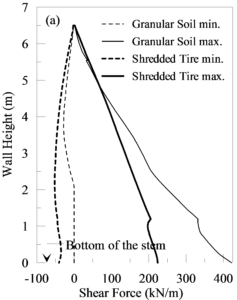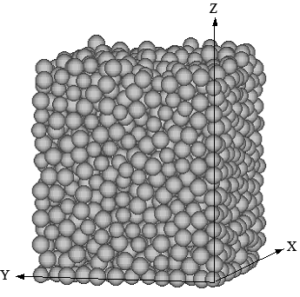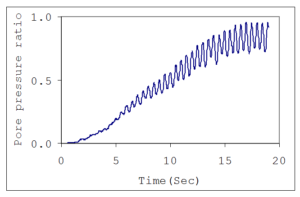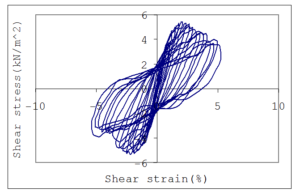Current Projects
- Evaluate, Update, and Rewrite SCDOT Seismic Design Policy and Procedures, Co-PI (16.1%), $1,498,639(Clemson PI, 100%), 08/15/23-00/14/27 .
- Update to Scenario_PC, South Carolina Department of Transportation, Co-PI (50%), $1,274,033, 03/01/19-02/28/25.
- IUSE/ PFE: RED: Clemson University: Learning Teams and Innovation Ventures for Adaptable Training in Engineering (CULTIVATE), NSF, Co-PI (2.6%), $1,999,289, 07/15/17-07/06/23.
- Understanding the nonlinear hydromechanical effects of extreme events to improve performance and reduce costs of infrastructure foundations, Clemson University, PI (75%), $23,544.
- Laying down roots: Mimicking Root Architecture to Develop Innovative Cost-Effective Foundations for Tall Wind Turbines, Clemson University, Co-PI (50%), $16,401.
- RAPID: Critical Assessment of Drainage Infrastructure Performance in a Sustained Flooding, NSF, Co-PI (26%), $65,458, 11/01/18-10/31/20.
Current Research Topics
-
Seismic risk analysis of highway bridges and design philosophy
-
New ground motion prediction model and site factor development based on nonlinear site response analysis
-
Design and robust design optimization of the piled-raft foundation for tall wind turbines
One of the sustainable ways to meet the ever-increasing global energy demand is to produce more and more wind energy. Wind energy production can be increased by building either taller towers or many small towers. Building taller towers to access steadier and higher wind induce larger lateral loads at the base of the tower and the design of the foundation to support such large loads becomes critical for safety and economic reasons. Among the many foundation types used to support wind turbine towers, the piled-raft foundation is considered an economical one especially when the subsurface condition is poor for supporting loads. Piled-raft foundation takes advantage of pile foundation that is effective for controlling the total and differential settlements and mat foundation that is effective for developing higher bearing capacity. Because of the spatial variability of the subsurface condition and wind speed, the uncertainties in the soil properties and wind speed must be considered systematically in the design.
-
Climate-adaptive geotechnical design framework for the design of shallow and deep foundations
The variation in performance of foundation, interface between the structure and ground surface, is caused by the uncertainties associated with not only the geotechnical parameters but also the hydrological parameters that include intensity and duration of hydrological events and water table depth. The impact of such hydrological events significantly affects the performance of foundations by changing the soil strength and stiffness parameters of subsurface soil which may lead to foundation failures. Such failures can also cause damage to the supporting structure. Thus, to better understand the performance of geotechnical systems under different hydrological events and also to build sustainable and resilient infrastructure systems, the design of geotechnical systems should be carried out in a coupled hydrological-geotechnical manner considering the site-specific geotechnical and hydrological parameters.
This poster presents a mathematical framework to investigate the performance of shallow and deep foundations under hydrological events for a number of sites in the United States. In this framework, which is developed based on the partially saturated soil mechanics principles, the one-dimensional Richards’ equation is numerically solved to compute the spatial and temporal variation of the degree of saturation and matric suction in subsurface soil due to the site-specific rainfall, evapotranspiration, and water table depth as model boundary conditions. Then, the critical settlement and bearing capacity of foundations are calculated through the probabilistic analysis using the computed degree of saturation and matric suction within the foundation’s influence zone.
The results show that the hydrological parameters have a significant impact on the performance of shallow and deep foundations, and in general, they improve the predicted foundation design values obtained from conventional methods in terms of the settlement and bearing capacity. In addition, it is also observed that the water table can alter the performance of foundations when its level reaches the foundation influence zone. It is worth mentioning that the proposed framework can also be applied to various other earthen structures to improve their design for economical advantages, sustainability, and resiliency.
-
Development of innovative foundation for tall wind turbines through biomimicry
Since the piled-raft foundation looks like a tree bulb (raft) and roots (piles) system, the numerical study was continued to develop a new foundation configuration for wind turbines by biomimicking the tree bulb and root system of tall trees. Based on the examination of the tree root system of tall trees, three simplified root configurations with six, twelve and eighteen main roots were developed. Three additional configurations were developed by adding two sub-roots per the main root for each of the previous configurations. Then, finite element models were created for each configuration in ABAQUS and analyzed by applying the design loads. The finite element model with eighteen main roots and sub-roots. The computed lateral, vertical and differential settlements were compared. The results showed that the addition of main roots contributed to a higher improvement in the performance, whereas, the contribution of sub-roots was insignificant.
-
Design, finite element modeling, and robust optimization of retaining walls backfilled with lightweight materials subjected to earthquake loads
The applicability of shredded tire as an economical alternative for conventional granular soil backfill for retaining walls was investigated by conducting geotechnical and structural designs as well as finite element simulations. A literature survey was conducted to compile and document the engineering properties of the shredded tires. It was found that the key geotechnical engineering properties vary significantly with the shred size and shredding method. Then, a gravity-cantilever retaining wall was designed for dynamic loading conditions considering seismic design parameters corresponding to the Charleston, SC area. Geotechnical design revealed a longer toe compared to heel for shredded tire backfill to maintain stability; however, a shorter footing was needed to maintain overall stability compared to that of granular backfill. Conventional designs and finite element simulations showed significant reductions in computed horizontal deflection at the tip of the wall, structural demand in terms of maximum shear force and bending moment, and construction cost in terms of excavation and material when the shredded tire was used as the backfill. Upper and lower bound curves of maximum shear force and maximum bending moment in the stem were also produced based on the results of parametric studies conducted by varying the friction angle and cohesion of shredded tire, and the amplitude and mean period of the input motion.
-
Physical (centrifuge) modeling of piles in unsaturated soil subjected to earthquake loads

- Development of a three-dimensional discrete element model for understanding the mechanism of soil liquefaction at the microscale
Liquefaction-induced damage to the built environment is one of the major causes of damage in an earthquake. Since Niigata earthquake in 1964, it has been popularly recognized that the liquefaction-induced ground failures caused severe damage in various forms, such as sand boiling, ground settlement, lateral spreading, landslides, etc,. Since then, understanding the mechanism of liquefaction phenomena at the microscopic level became very important to take measures against the liquefaction-induced ground failures. The continuum approach is not suitable to explain liquefaction and its associated phenomena. A discrete approach, such as the Distinct Element Method (DEM), is an effective method that can simulate the mechanism of liquefaction and associated phenomena well at the microscopic level. Most of the simulation studies on liquefaction phenomena using DEM have been done in two dimensions in which preparation of loosely packed sample was a major difficulty. To understand the mechanism of liquefaction clearly, it is important to replicate the real ground conditions in the simulation. To facilitate this study, we have developed a three-dimensional DEM, which uses spherical particles in the simulation. Particles are assumed to be rigid but the actual behavior of the particles is taken into account by assuming deformable contacts. Slipping of particles at the contact obeys the Coulomb friction limit. Treatment for pore water, consideration of direct effects of pore water, is another most important factor in liquefaction analysis using DEM. In the constant-volume analysis, without consideration of direct pore water effect, sand boiling kind of effect could not be simulated. In the method proposed by Nakase, the total element volume is considered to belong to the cell in which element’s center is located. When the element locates closer to the virtual boundaries (cell boundaries), a small movement of a particle will cause a sudden change in the pore volume and excess pore water pressure. The problems that come across in the past methods are overcome in our study. In our study, we have adopted a method to consider the effects of pore water directly to improve the micromechanical behavior of the particles. Hollow cylindrical torsion test under undrained condition, which replicates the ground condition before and during the earthquake well, is simulated using 3-D DEM. A vertical strip from the hollow cylindrical specimen is considered in the study and the boundaries in the tangential direction are numerically connected to simulate the continuity in the tangential direction. Stress conditions on the inner, outer top and bottom boundaries are simulated by imposing a prescribed force boundary. The liquefaction study is carried out by strain control test. Cyclic shear displacement is applied at the top of the numerical specimen while keeping the bottom layer is fixed. From the simulation results obtained, it can be noted that with the proposed model, the mechanism of liquefaction phenomena can be simulated and the stress-strain relation, from the microscopic viewpoint, can be discussed.
-
Pavement response using the coupled pavement-rolling tire interaction model












